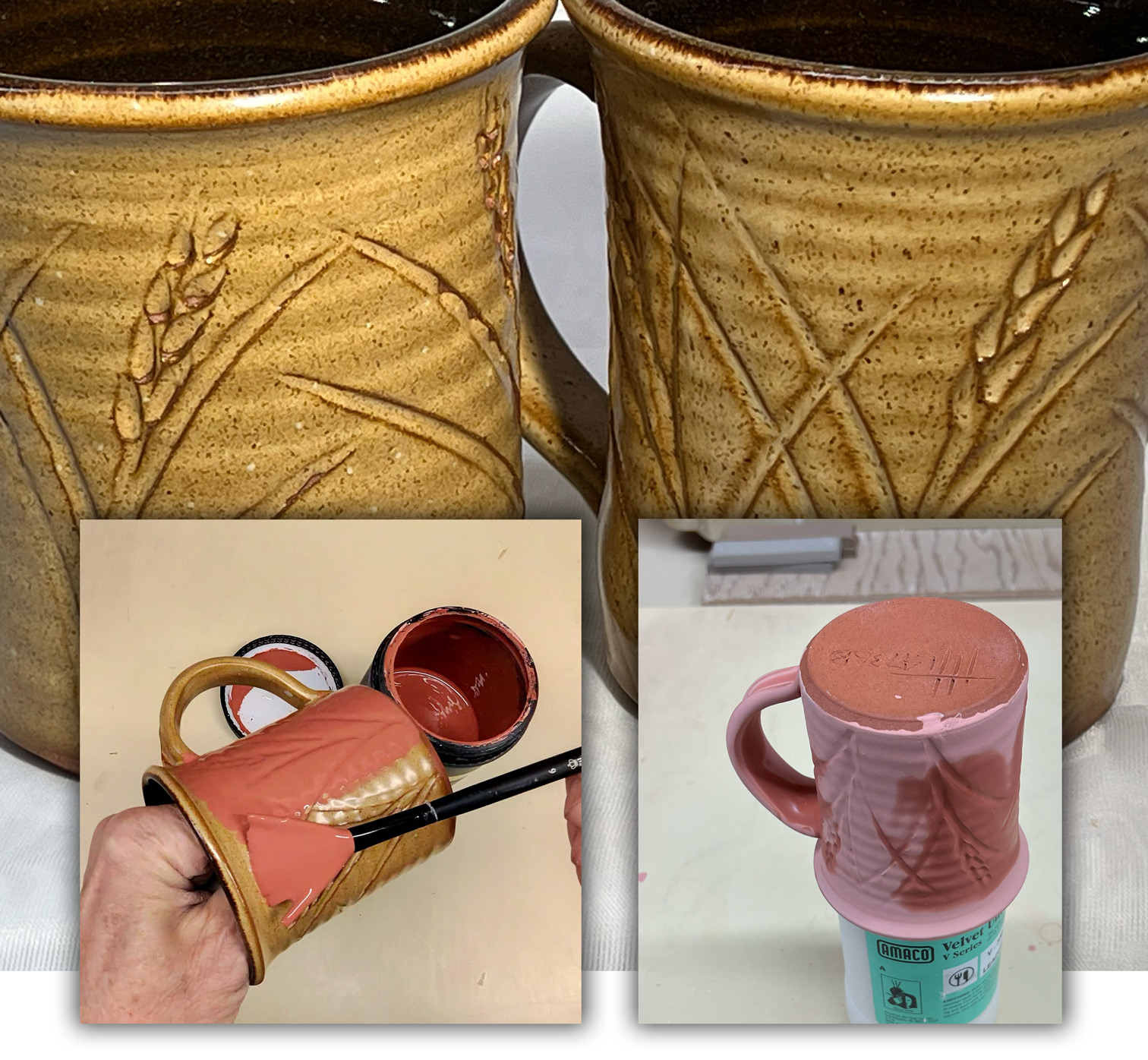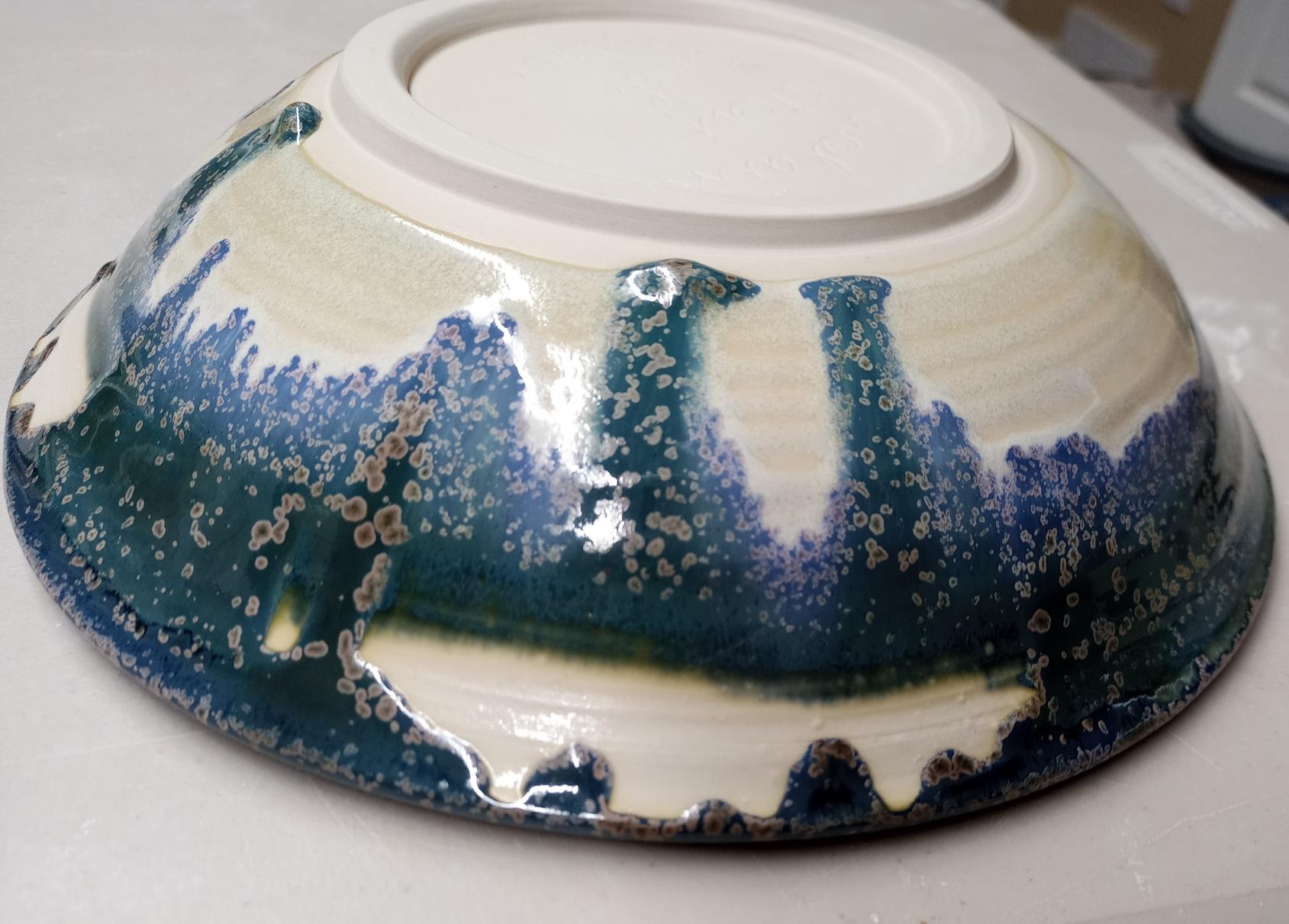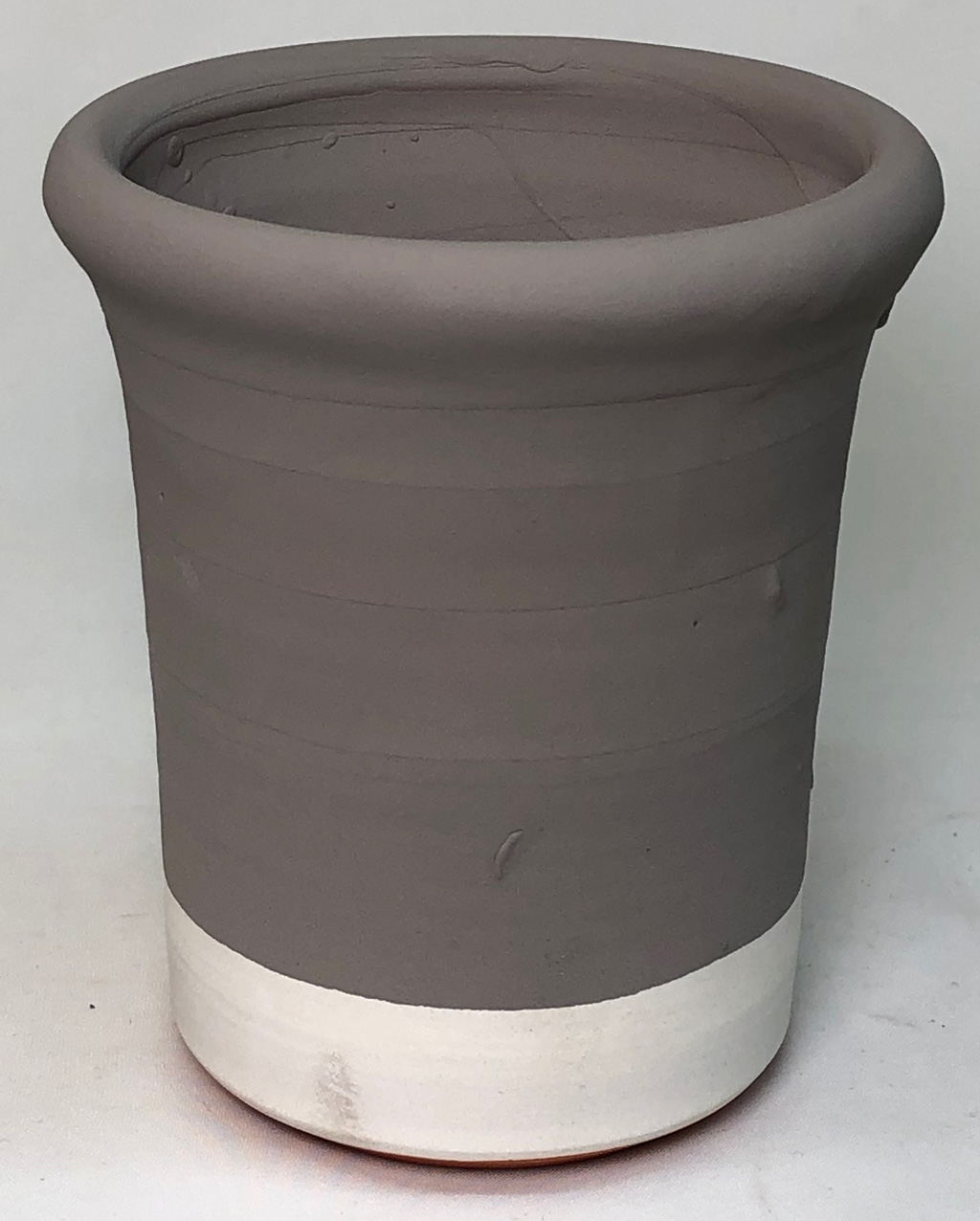| Monthly Tech-Tip | No tracking! No ads! |
Six layers, 85% Alberta Slip in the glaze, yet no cracking. How? CMC gum.
Six layers of any normal dipping glaze would be impossible (flaking usually starts with the second). Yet this slurry is 85% plastic clay, it shrinks so much that it would be like a "dried-up lake bed" on the first layer. By the second it would all just fall off! How was it possible to dip six layers of this with no cracking? A 1% CMC gum addition added enough adhesive power to not only stick it on better but also counteract the drying shrinkage! Of course, there is a downside: A drying period is needed between each layer, the time depends on the porosity and wall thickness of the ware and the amount of gum. This also demonstrates the difference between the function of Veegum (and similar materials) with CMC. The former, if added to this recipe, would gel the slurry, require more water and increase the shrinkage, making the cracking much worse. We typically use a mix of calcine:raw Alberta Slip to control drying shrinkage enough to enable crack-free application for one coat (without CMC). But, as a first coat dipping glaze, a CMC addition is required.
Related Pictures
Paint another layer onto a fired glaze? Yes. With CMC gum.

This picture has its own page with more detail, click here to see it.
The cone 6 mug on the left has the G3933A glaze, applied as a dipping glaze. It turned out poorly - crawling from corners and looking thin and washed out. I made a brushing glaze version of this (which adds 1.5% CMC gum), I keep it around for this very purpose. It has a high specific gravity (unlike commercial ones that have high water contents - they will run and go on too thin if you try this). Because of the gum it dries hard, there is no shrinkage or cracking. On a second firing, using the C6DHSC schedule again, (mug on the right) the surface is transformed - thicker, more vibrant color (being picked up from the underlying body).
Multi-Layering on a Large Bowl has Produced Crawling
What does it take to make this work?

This picture has its own page with more detail, click here to see it.
Dipping glazes are typically just rock powder in water (with a little clay), it is actually amazing when they dry and adhere to bisque ware well enough to not crawl like this! There are multiple factors that can make the glaze/body bond even more fragile:
-Bisque surface is smooth.
-Bisque absorbs less water because it is damp, too dense (fired too high) or ware is thin-walled.
-The glaze does not pass a sanity check (e.g. it has excessive clay and shrinks too much on drying or has inadequate clay and goes on too thick and doesn't harden enough).
-The glaze slurry is flocculated and has too much water.
With all of this, we are lucky to get one layer to stick well enough to survive handling and not come crawling out of the kiln! But when a second layer is added, the body bond really gets tested. Just the rewetting stresses it. If glaze #2 contains more clay the situation is even worse, it shrinks on drying and pulls the first one away from the body.
The solution: Use a base coat dipping glaze conditioned with CMC gum for layering over. The degree to which the glaze exhibits the issue determines the percentage of gum needed (CMC slows down drying so minimize it). Some people have double-dipped for years without doing this. I am not one of them.
Videos
Links
| Glossary |
Base-Coat Dipping Glaze
These are ceramic glazes intended for dipping but which contain a gum to enable them to adhere to the body better and tolerate over-layers without danger of flaking or cracking. |
| Materials |
CMC Gum
CMC gum is indispensable for many types of ceramic glazes. It is a glue and is mainly used to slow drying and improve adhesion and dry hardness. |
Got a Question?
Buy me a coffee and we can talk

https://backup.digitalfire.com, All Rights Reserved
Privacy Policy

